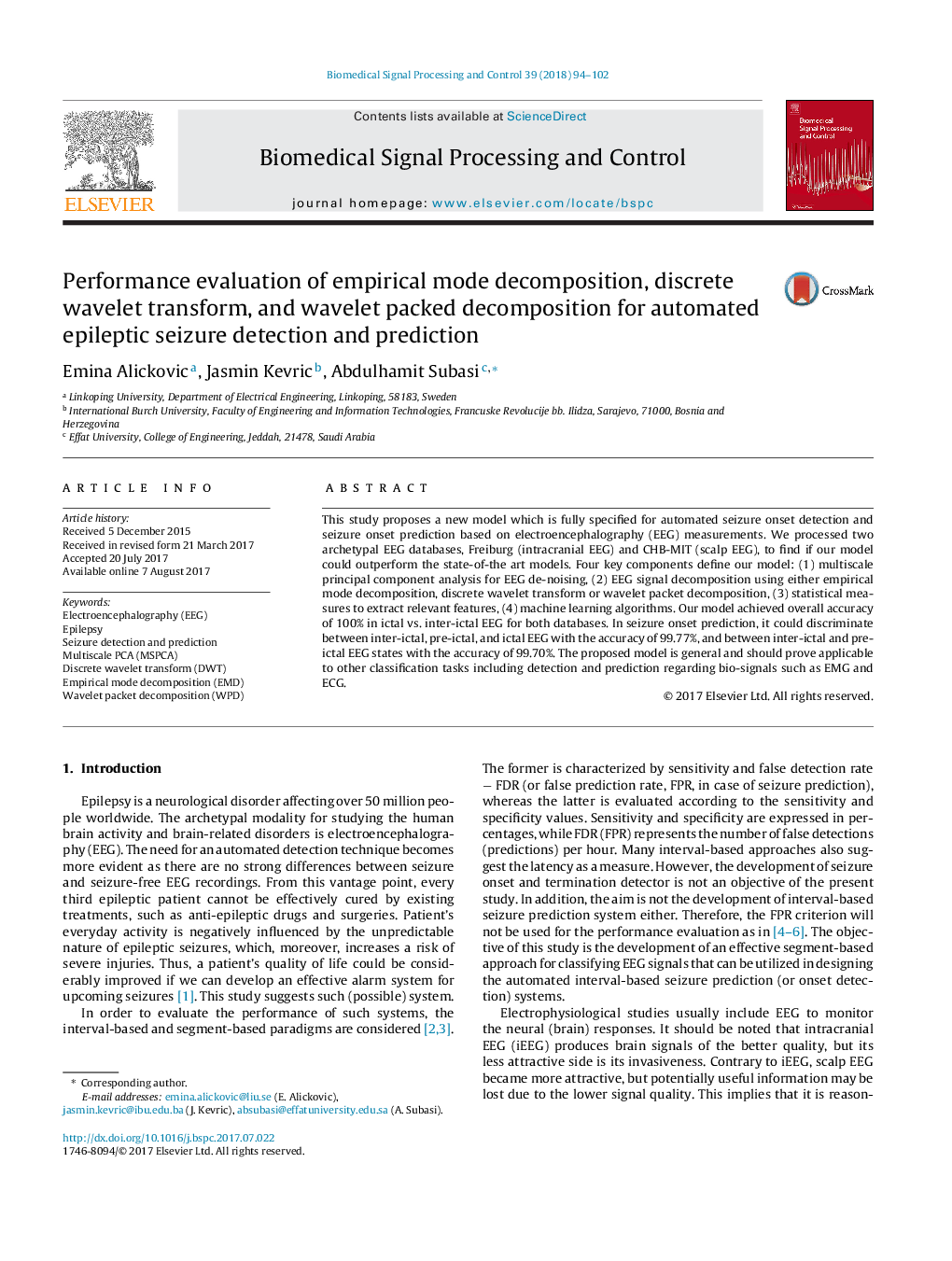| Article ID | Journal | Published Year | Pages | File Type |
|---|---|---|---|---|
| 4973469 | Biomedical Signal Processing and Control | 2018 | 9 Pages |
â¢EEG databases used to find a model for better detection and prediction of seizure onsets.â¢MSPCA is used to remove artefact-contaminated parts from EEG measurements.â¢EMD, DWT and WPD used to decompose EEG signals into different sub-bands.â¢Different statistical values are used to extract relevant features.â¢ANN, k-NN, SVM and random forest machine learning algorithms used for classification.
This study proposes a new model which is fully specified for automated seizure onset detection and seizure onset prediction based on electroencephalography (EEG) measurements. We processed two archetypal EEG databases, Freiburg (intracranial EEG) and CHB-MIT (scalp EEG), to find if our model could outperform the state-of-the art models. Four key components define our model: (1) multiscale principal component analysis for EEG de-noising, (2) EEG signal decomposition using either empirical mode decomposition, discrete wavelet transform or wavelet packet decomposition, (3) statistical measures to extract relevant features, (4) machine learning algorithms. Our model achieved overall accuracy of 100% in ictal vs. inter-ictal EEG for both databases. In seizure onset prediction, it could discriminate between inter-ictal, pre-ictal, and ictal EEG with the accuracy of 99.77%, and between inter-ictal and pre-ictal EEG states with the accuracy of 99.70%. The proposed model is general and should prove applicable to other classification tasks including detection and prediction regarding bio-signals such as EMG and ECG.
